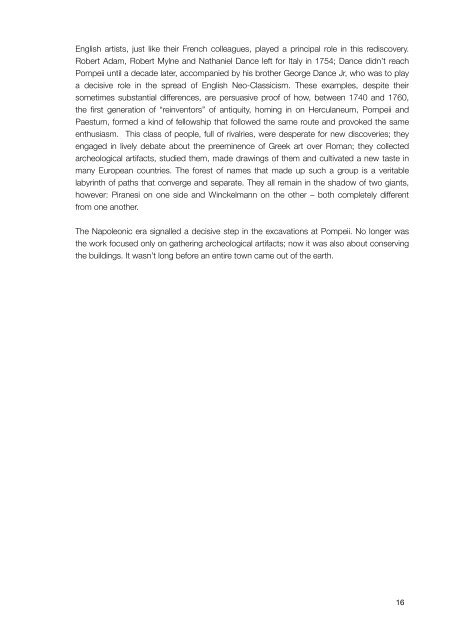Contents - Musée Maillol
Contents - Musée Maillol
Contents - Musée Maillol
You also want an ePaper? Increase the reach of your titles
YUMPU automatically turns print PDFs into web optimized ePapers that Google loves.
English artists, just like their French colleagues, played a principal role in this rediscovery.<br />
Robert Adam, Robert Mylne and Nathaniel Dance left for Italy in 1754; Dance didn’t reach<br />
Pompeii until a decade later, accompanied by his brother George Dance Jr, who was to play<br />
a decisive role in the spread of English Neo-Classicism. These examples, despite their<br />
sometimes substantial differences, are persuasive proof of how, between 1740 and 1760,<br />
the first generation of “reinventors” of antiquity, homing in on Herculaneum, Pompeii and<br />
Paestum, formed a kind of fellowship that followed the same route and provoked the same<br />
enthusiasm. This class of people, full of rivalries, were desperate for new discoveries; they<br />
engaged in lively debate about the preeminence of Greek art over Roman; they collected<br />
archeological artifacts, studied them, made drawings of them and cultivated a new taste in<br />
many European countries. The forest of names that made up such a group is a veritable<br />
labyrinth of paths that converge and separate. They all remain in the shadow of two giants,<br />
however: Piranesi on one side and Winckelmann on the other – both completely different<br />
from one another.<br />
The Napoleonic era signalled a decisive step in the excavations at Pompeii. No longer was<br />
the work focused only on gathering archeological artifacts; now it was also about conserving<br />
the buildings. It wasn’t long before an entire town came out of the earth.<br />
16


